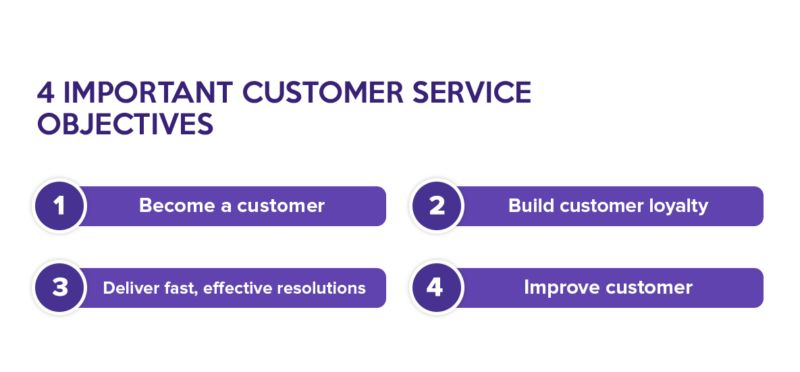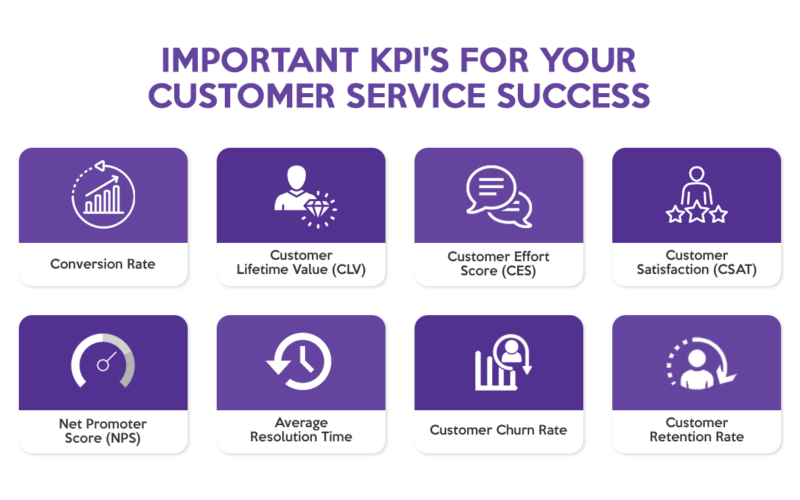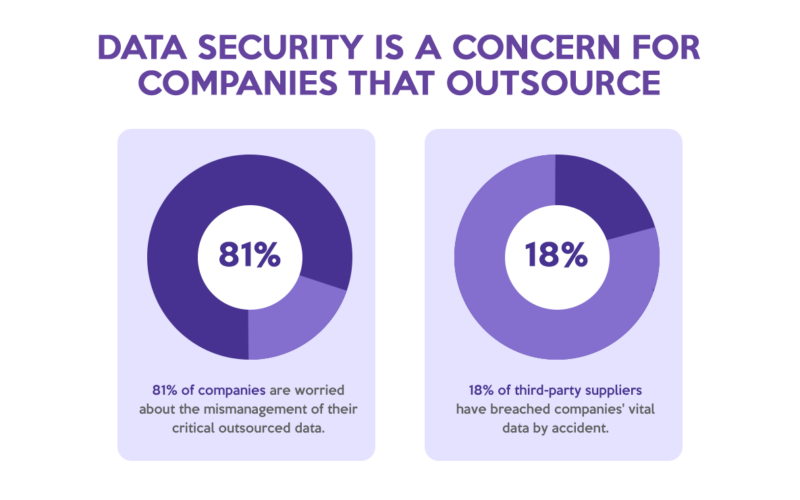Customer service outsourcing is a business approach of subcontracting a third-party company to handle your customer support services. The third-party provider, or the service provider, arranges for its own employees or computer systems to carry out the duties or deliver the services on-site at the premises of the employing company or remote locations.
This article aims to provide you with an understanding of outsourcing customer service, its benefits, the steps involved in outsourcing, factors to consider, and the potential challenges of outsourcing customer service and solutions for overcoming them.
Benefits of Outsourcing Customer Service
Cost Savings
Here are some ways businesses can save costs by outsourcing customer service:
Labor Cost Savings
By outsourcing, businesses can access a global talent pool and hire customer service agents from regions with lower labor costs. Compared to hiring and maintaining an internal customer service department, this can result in considerable savings.
Infrastructure and Technology Savings
Significant infrastructure, equipment, software, and technology system investments are needed to set up and operate in-house customer service operations. By outsourcing, companies can avoid these upfront costs and ongoing expenses related to technology and infrastructure upgrades. The outsourcing provider usually handles these tasks.
Training and Recruitment Savings
Hiring and training customer service agents can be expensive and time-consuming. Outsourcing customer service function shifts the responsibility of hiring, onboarding, and training staff to the outsourcing provider, helping companies to save costs.
Improved Customer Satisfaction
By partnering with a professional customer service provider, businesses can have access to a competent team dedicated to answering customer inquiries and complaints quickly and efficiently. They have established processes and technologies to ensure customers receive prompt and accurate assistance.
Customer service outsourcing providers have experience handling various communication channels, including live chat, email, and social media. They are adept in managing customer assistance and inquiries through different channels, guaranteeing a smooth and consistent customer experience. Assisting customers via their preferred channel enhances accessibility and convenience, which improves customer satisfaction.
Access to a Larger Pool of Talent
Businesses can access a global talent pool with a variety of skill sets and expertise by outsourcing customer service. Service providers have teams of customer service agents with expertise in multiple industries or certain segments. This broad talent pool ensures that companies can find the right candidates with the skills to address customer inquiries or support needs efficiently.
Outsourcing providers may also offer businesses a talent pool of employees who can speak multiple languages. This is useful for businesses with global operations or clients from different countries. Having customer support agents who can communicate in multiple languages helps increase customer satisfaction and strengthen relationships with customers from other regions.
Improved Efficiency
In handling customer inquiries and support, customer service outsourcing companies have a wealth of knowledge and expertise. They have set up procedures, training courses, and best practices to deal with various consumer issues efficiently and effectively. Businesses can access this expertise by outsourcing, enabling faster and more accurate issue resolution and ultimately increasing overall efficiency.
Steps for Outsourcing Customer Service Effectively
Businesses that want to improve customer service while focusing on their core capabilities can benefit from outsourcing customer service. Following these steps will help to ensure a successful outsourcing process:
1. Define your customer service needs

2. Research outsourcing options
When it comes to customer service, every organization has specific needs and requirements. Researching your outsourcing options allows you to identify providers specializing in customer service and having experience in your industry or unique niche. This raises the chances of finding a partner who understands your business and can deliver customized solutions to your requirements.
Researching also enables you to assess the capabilities of different service providers. You can look at their years of experience, client testimonials, and industry certifications. This information lets you assess their capacity to meet your customer service needs properly.
3. Develop a clear communication plan
A communication strategy helps align expectations between your company and the outsourced partner. It guarantees that both parties understand the outsourcing arrangement’s goals, objectives, and desired outcomes. This helps avoid misunderstandings and work toward a shared vision.
A communication plan also outlines the communication channel, frequency, and procedures. It ensures that information, like product updates, new policies, or customer feedback, gets disseminated on time. This allows the outsourced agents to provide accurate and up-to-date support to your customers.
It also lays out the process for issue resolution and escalation. It describes how customer complaints, complex inquiries, or critical issues are handled and escalated between external and internal departments. This guarantees that problems are resolved quickly, reducing any negative impact on customer satisfaction.
4. Implement and monitor the outsourcing process
Begin the onboarding process once you’ve chosen an outsourced partner. Provide them with detailed information about your company, products or services, customer profiles, processes, and systems. Training sessions should be conducted to familiarize them with your brand values, customer service protocols, and any special requirements. Ensure that the outsourced workforce understands your business and can deliver accurate and consistent service.
Establishing clear performance metrics and Service Level Agreements (SLAs) that are aligned with your customer service objectives is essential. Key Performance Indicators (KPIs), such as response time, resolution time, customer satisfaction, and first-call resolution rate, must be defined. Both parties should agree upon these metrics and be tracked regularly to ensure accountability and performance optimization.
To monitor and evaluate the performance of the outsourced customer service team, define evaluation criteria, conduct frequent performance audits, and review customer interactions. Implement procedures for delivering feedback, coaching, and training to continuously enhance service delivery quality.
Factors to Consider When Outsourcing Customer Service
Quality of Services
The quality of customer service directly influences customer satisfaction. Customers who interact with your business expect timely, accurate, and helpful service. If the outsourced customer support team does not provide high-quality assistance, it can lead to unsatisfied customers, unfavorable reviews, and potential business loss. Prioritizing service quality contributes to a great customer experience, encourages loyalty, and boosts customer satisfaction.
Customer service impacts your brand’s reputation, and the outsourced customer service team’s service reflects your brand. Customers who often experience poor customer service can taint your brand’s image. On the other hand, customers who receive excellent service are more likely to remain loyal to your brand and promote it to others.
Availability and accessibility
Customers anticipate receiving assistance whenever they need it. If your business serves customers from different time zones, considering the availability and accessibility of the outsourcing partner becomes even more important. This includes providing service after hours, on weekends, holidays, or 24/7, depending on your target audience and their needs. Providing round-the-clock support enables you to cater to customers in different time zones, giving them quick assistance regardless of location.
Ensuring availability also helps manage peak periods where there are high volumes of inquiries from customers. It prevents customer frustration due to long wait times and unresponsive support.
Cost
Considering cost helps you balance service quality and affordability. It allows you to allocate resources efficiently and optimize your spending. The cost of outsourcing customer service activities can be used to calculate the possible ROI. You can measure the value and viability of an outsourcing investment by comparing the expenses of outsourcing to the predicted benefits, such as improved customer satisfaction, efficiency, and more revenue. This analysis ensures that the benefits outweigh the expenses.
Cultural Compatibility
Cultural compatibility adds to a better customer experience. Customers prefer connecting with a customer service representative that understands their cultural context, values, and expectations. When the outsourced team is familiar with your customers’ cultural backgrounds and customs, they can better understand their needs, concerns, and emotions. This enables the agents to provide emphatic and culturally relevant support, improving customer experience.
Cultural differences can cause misunderstandings, misinterpretations, and unintended offenses. Considering cultural compatibility reduces the possibility of cultural misconceptions that could negatively affect customer interactions. This provides better communication, minimizes customer dissatisfaction, and avoids potential reputational damage.
Tips for Successful Outsourcing Customer Service
Foster open and clear communication
Set up a clear and effective communication channel between your in-house and outsourced customer service team. Encourage collaboration, emphasizing that they are part of a single customer service ecosystem with the same goal. Create an environment of open communication by encouraging the outsourced team to ask questions, seek clarification, and share thoughts. Promote a culture where they can express their concerns, share ideas, and contribute to improving customer service. Actively listen to their feedback and address any difficulties promptly.
Provide regular feedback and constructive criticism to the outsourced staff. Recognize and acknowledge their strengths while also pointing up areas for improvement. Provide direction and improvement suggestions, focusing on specific actions that may be implemented to improve communication and customer service.
Maintain a consistent brand voice
Maintaining a consistent brand voice when outsourcing customer service is critical for maintaining brand identification and providing consistent customer service. Start by creating brand guidelines for representing your brand in every customer interaction. Ensure the outsourced team is well-versed in your brand guidelines and recognizes the need for a consistent brand voice. Hold training sessions to ensure they understand your brand’s identity and voice.
Use technology to your advantage
Integrate chatbots and AI-powered virtual assistants into your customer service operations. These technologies can handle basic inquiries, provide immediate responses, and guide customers through simple processes. Chatbots can collect basic information and transfer more complex concerns to human agents, reducing response times and increasing efficiency.
Ticketing systems can be used to manage and track customer inquiries and issues efficiently. A ticketing system aids in the prioritization and assignment of tasks, tracking of response times, and fast resolution of customer inquiries. This technology makes it easier for your in-house and outsourced teams to collaborate, ensuring customer requests are handled swiftly and effectively.
Continuously evaluate and improve the outsourcing process

Regularly analyze performance data to see how well the customer service provider meets the defined metrics. Monitor response times, customer satisfaction scores, and other relevant performance measures.
Use surveys, post-interaction feedback forms, or online reviews to acquire customer insights. Analyze this input to understand customer satisfaction levels better, identify pain points, and find opportunities for improvement. Based on the evaluations, provide feedback to identify strengths and areas for growth. This helps the outsourced team to fine-tune their strategy and improve their performance.
Potential Challenges of Outsourcing Customer Service and How to Overcome Them
Outsourcing customer service has various advantages, but it also has its drawbacks. Here are common challenges linked with outsourcing customer service, as well as solutions for overcoming them:
Language Barriers
Language differences can hinder effective communication between the outsourced customer service team and your customers.
To overcome this, ensure the outsourced workforce has strong language skills and cultural sensitivity training. Provide guidelines and resources to help bridge language gaps. Hold frequent training sessions and communication channels to clear any ambiguities and encourage shared understanding.
Time Differences
When outsourcing customer service, time zones can be a problem, particularly if your company has multiple locations that operate in various time zones. The service coverage hours must be clearly defined based on customer needs and expectations. To provide a seamless customer experience, decide when customer service support should be available. This may entail providing additional hours or round-the-clock coverage. Work with the outsourcing company to set up overlapping shifts that coincide with the customers’ peak activity hours. Determine the periods of high demand and ensure the customer service team is available during these times. This improves responsiveness and lessens the impact of time differences.
Security and Data Protection

Sharing sensitive customer information is part of outsourcing customer service. To address security concerns, thoroughly check the outsourcing provider’s security data security policies. Ensure they follow relevant regulations and have solid data protection policies and infrastructure. To protect customer data, provide clear contractual agreements that specify how data should be handled and the required levels of confidentiality.
Maintaining Control Over the Customer Experience
Concerns over loss of control and oversight may arise when outsourcing customer service operations to a third-party company. Establish open and transparent communication lines with the contracted team to keep control. Establish escalation protocols, communicate performance data, and hold regular meetings. Implement technological tools that allow real-time monitoring, performance tracking, and reporting. Maintain an active part in overseeing the outsourced customer support activities, offering suggestions, and quickly resolving any problems.
Outsourcing to a remote customer service team is a strategic move that can benefit businesses, including cost savings, improved customer satisfaction, access to a larger pool of talents, and improved efficiency. Successful customer support outsourcing, however, involves careful planning, thorough research, and effective implementation.
Companies should start by defining their customer needs and conducting thorough research about their outsourcing options to outsource effectively. They should develop a clear communication strategy for monitoring and evaluating the service provider’s performance. Factors such as quality of services, availability and accessibility, cost, and cultural compatibility of the outsourcing provider are some important aspects that must be considered.
By considering these factors, leveraging technology, and maintaining an open and collaborative relationship with a professional customer service provider, businesses can achieve their customer service goals, deliver exceptional service, and drive customer satisfaction.



Leave A Comment
You must be logged in to post a comment.